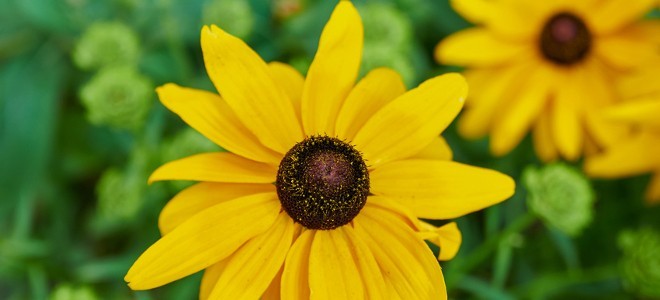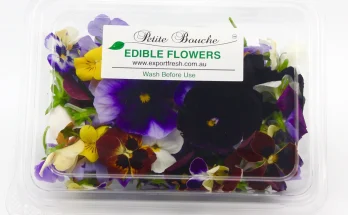
Black-eyed Susan is an erect herbaceous perennial that has a rich history as a native wildflower, popular first as a medicinal herb used by pre-colonial Native Americans and then finding its way into 19th century cultivated flowerbeds. The many yellow daisy-like flowers with a brownish-purple center first mature in early summer and continue into the fall. A rosette of leaves that originate at the base of the stem persists through the winter, creating an attractive winter ground cover.
Varieties of Rudbeckia

The size of Rudbeckiaplants varies greatly, from dwarf (1 foot tall) varieties like ‘Becky’ and ‘Toto’ to the giant Rudbeckia maxima, which can reach 9 feet tall. Growing conditions and weather also affect the mature size of plants.
Annuals
- Rudbeckia hirta Cappuccino Bronze petals bleed into yellow at their tips.
- Rudbeckia hirta Cherry Brandy Cherry-red flowers.
- Rudbeckia hirta Prairie Sun Orange petals radiating back to lemon yellow with green central cone.
- Rudbeckia hirta Rustic Dwarfs Shorter variety with a mix of flowers from yellow to rich mahogany.
- Rudbeckia hirta Toto Dwarf, compact plants with golden-yellow blooms.
Perennials
- Rudbeckia fulgida var. sullivantii Goldsturm Deep yellow petals with an orange tint surrounding a purple-brown centre.
- Rudbeckia laciniata Goldquelle Bright lemon-yellow, double flowers.
- Rudbeckia laciniata Herbstsonne Golden, drooping petals surrounding a prominent pale green conical centre.
Also read about: Hypericum , the gift that keeps on giving
Did You Know?
- The black-eyed Susan gets its name from its black center, or “eye.”
- The flowers attract birds, bees and butterflies, especially when planted in large, colorful masses.
- When cut, black-eyed Susans can live in a vase for six to 10 days.

Although black-eyed Susans have often been dismissed as common wildflowers, the National Garden Bureau put them in the spotlight as first-rate garden plants by declaring Rudbeckia the plant of the year in 2008. This well-deserved accolade has led to the development of an impressive array of garden cultivars in a complete gamut of heights, colors, and forms. These new-generation Susies offer greater flair and versatility, making them suitable for settings ranging from prairie-style plots to urban gardens.
Sources and Additional Information
- PLANTS Profile for Rudbeckia hirta – USDA Natural Resources Conservation Service
- PlantFiles: Black-eyed Susan – Dave’s Garden
- Native Plants for Wildlife Habitat and Conservation Landscaping: Chesapeake Bay Watershed – U.S. Fish and Wildlife Service



